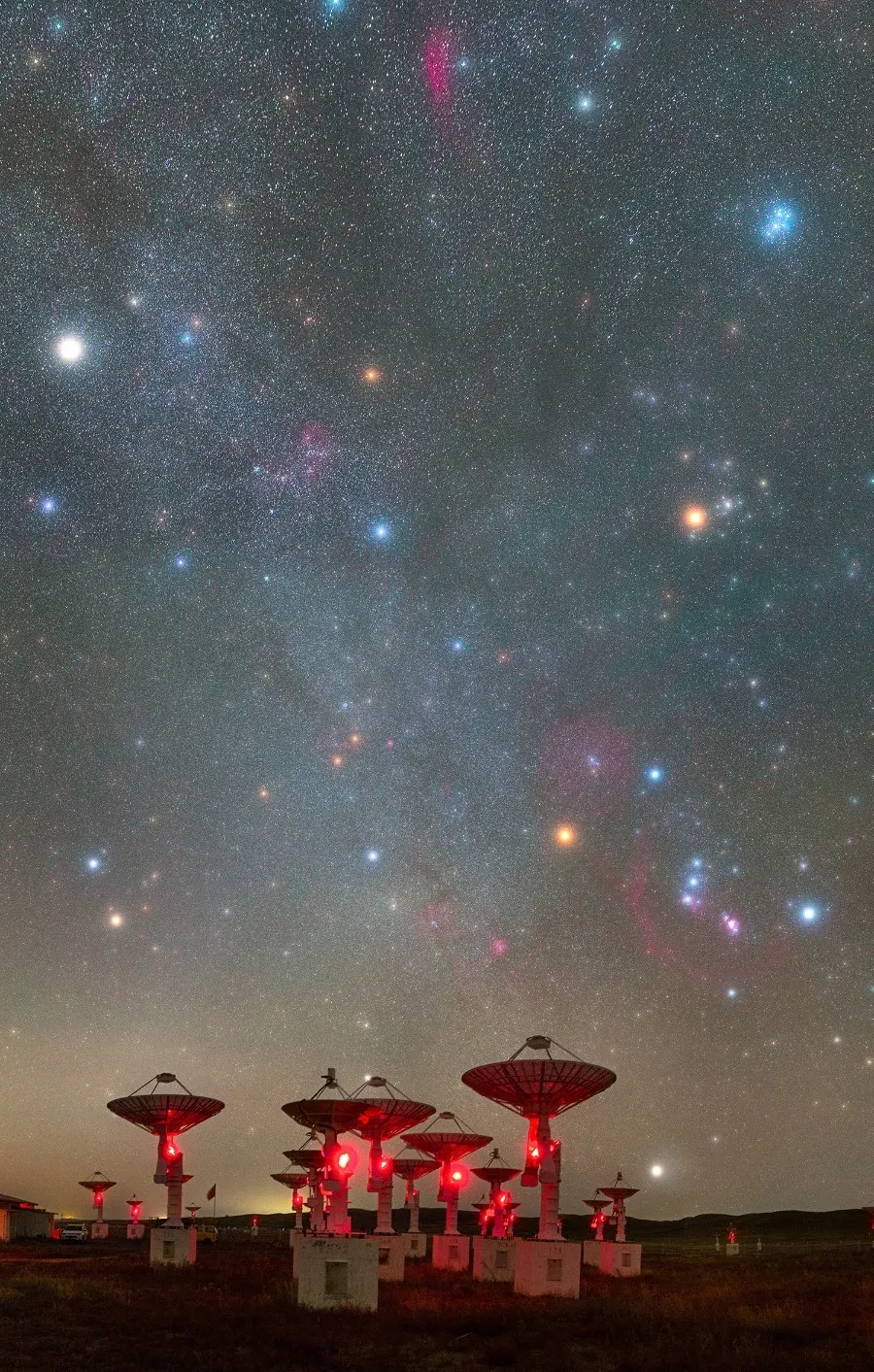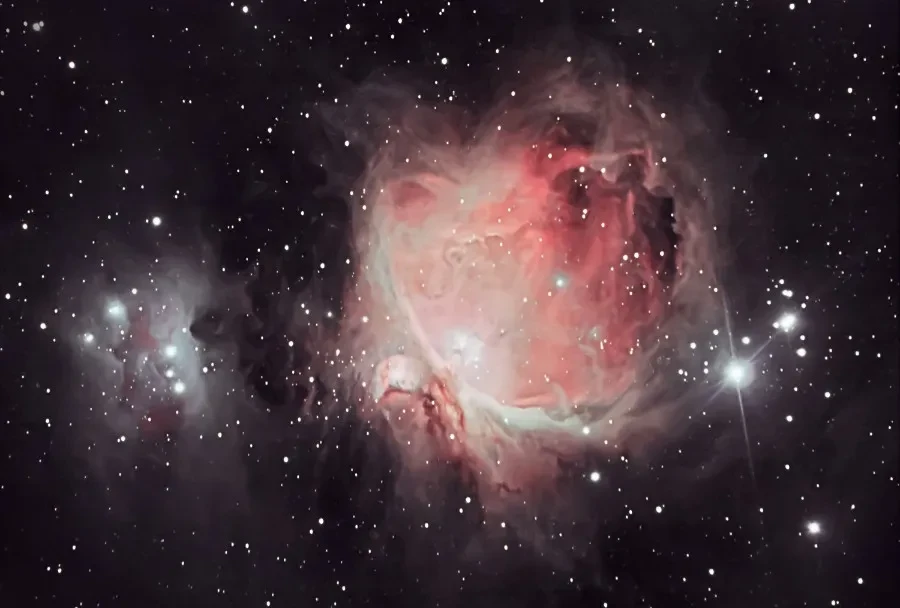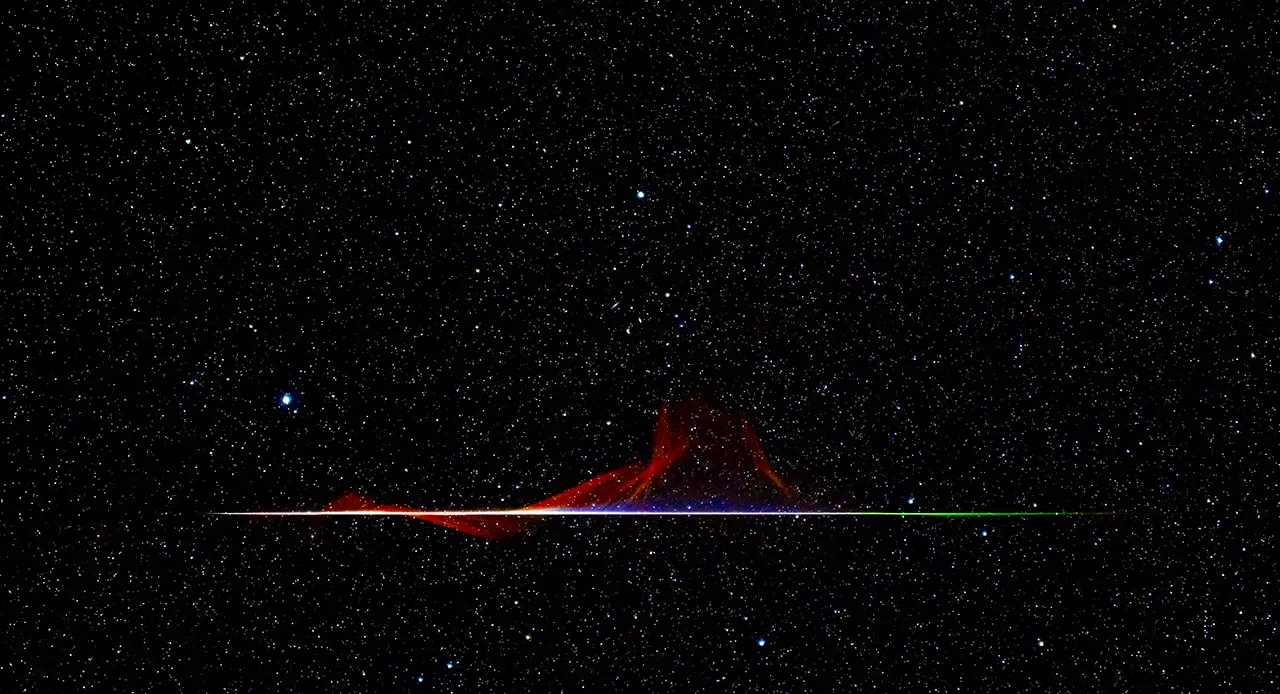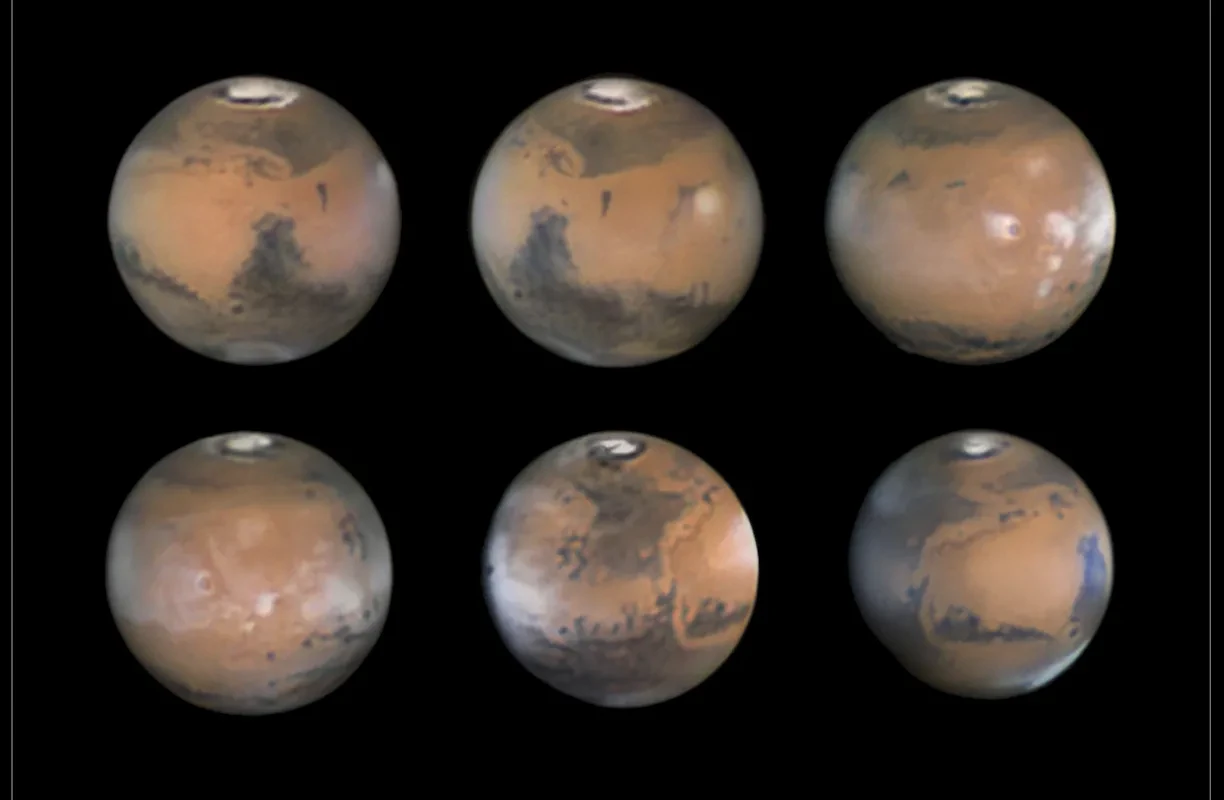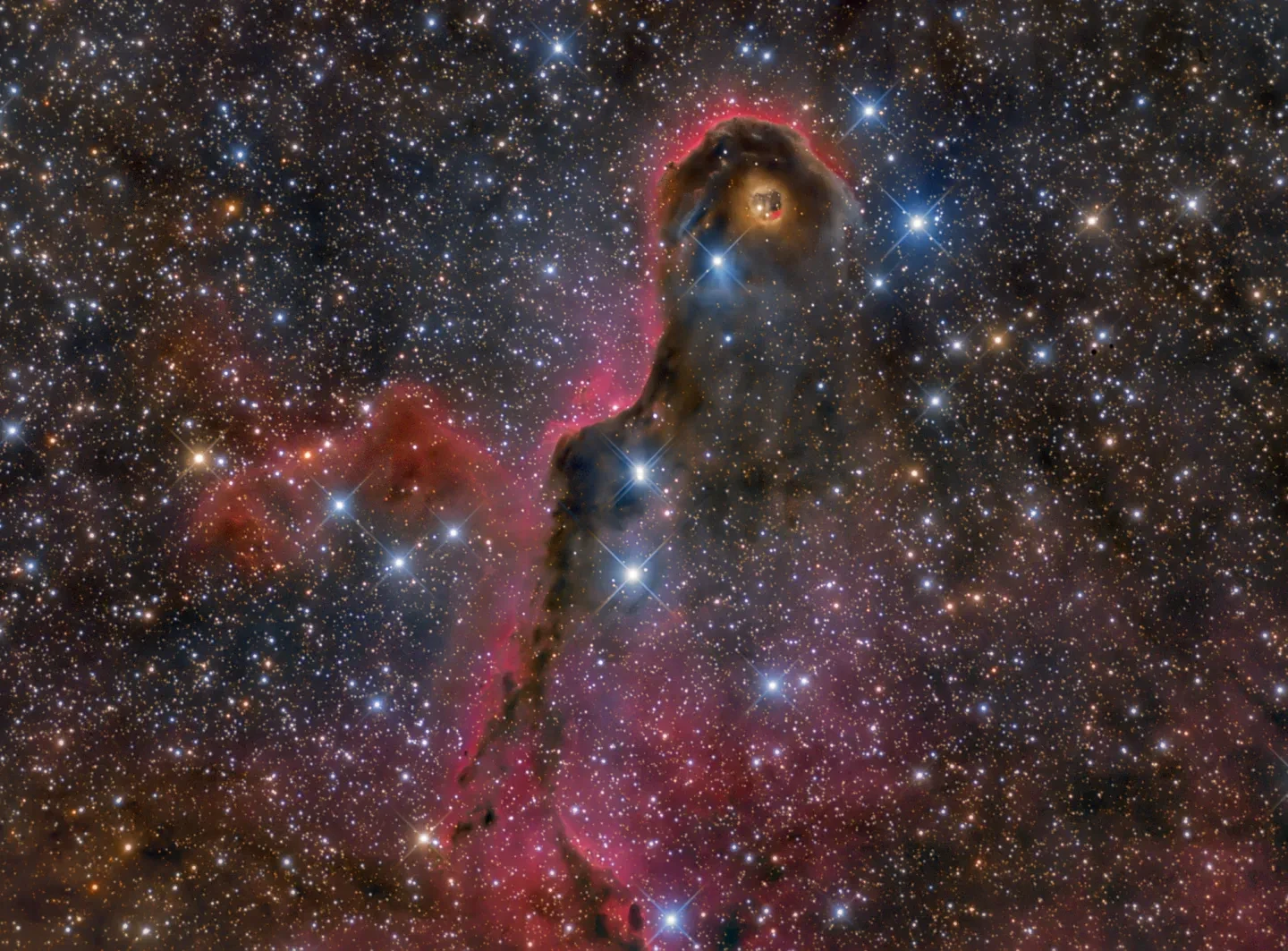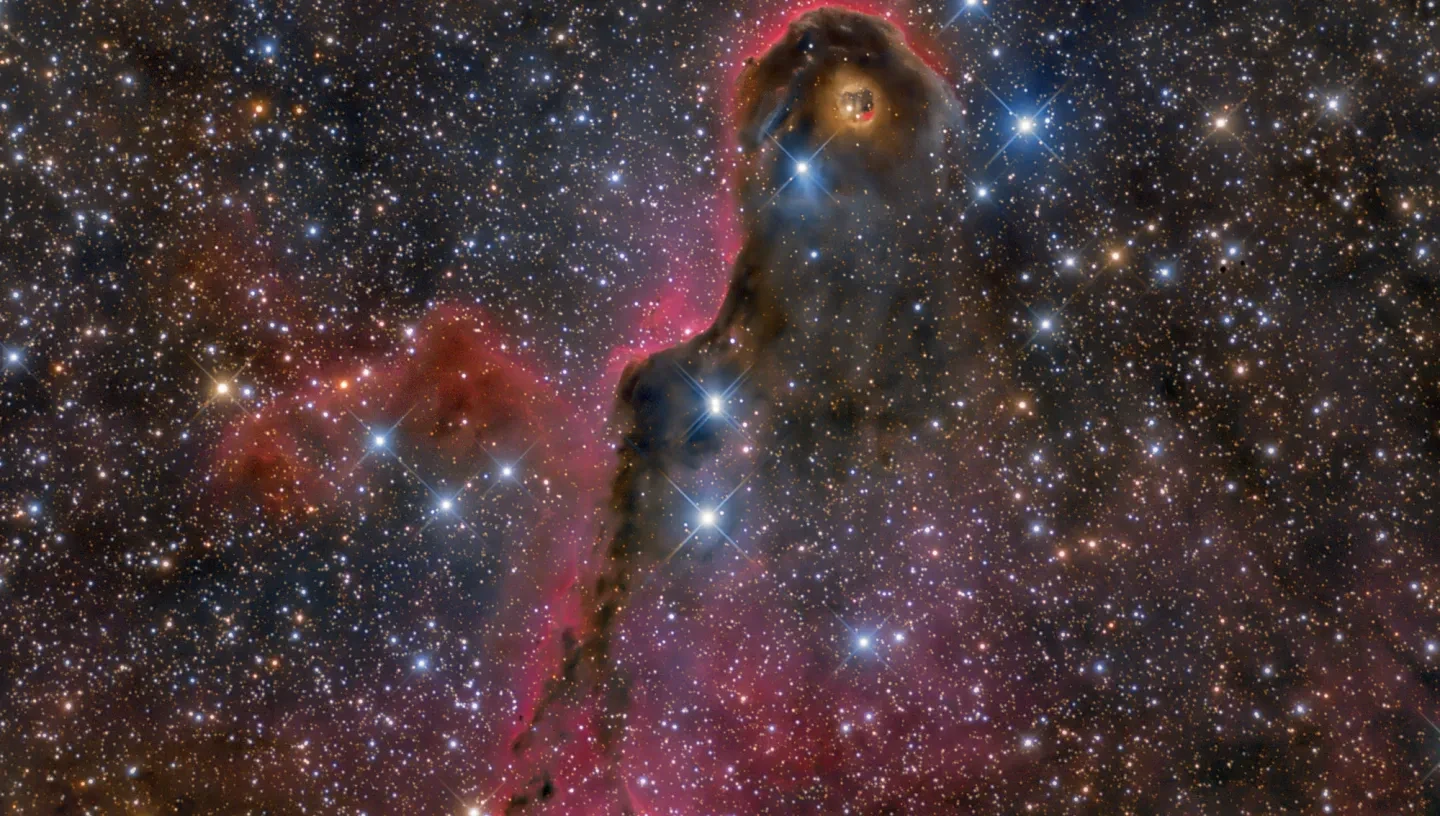
Start the year by catching the Red Planet at its brightest, take in the distant Elephant's Trunk Nebula, and view the Quadrantid meteor shower
By Sadie, Work Experience Student
Top 3 things to see in the night sky in January 2025:
- 4 January – The Quadrantid meteor shower peaks
- 16 January – Mars at its brightest as it reaches opposition
- Throughout the month - The magnificent Orion constellation is easily visible
Details given are for London and may vary for other parts of the UK.
Look Up! Podcast
Subscribe and listen to the Royal Observatory Greenwich's podcast Look Up! Our astronomers Catherine and Jess talk through some of this month’s must-see cosmic objects and discuss two space news stories: the delay to Artemis 2, and Ingenuity’s new life as a weather station.
Hunt for Orion
The month of January is a great time to see the fabulous constellation of Orion. Orion is a constellation most recognizable by its belt, a straight line containing three bright stars named Alnitak, Alnilam and Mintaka, which all have a relatively high brightness.
Just underneath Orion’s belt lies the Orion Nebula! Also known as Messier 42, this is a diffuse nebula situated inside the Milky Way. This is best viewed through some binoculars or a telescope, and you may even be able to take a picture through a camera on the telescope's lens.
Quadrantid meteor shower peaks
During the start of the month the Quadrantid meteor shower will be at its peak. This event will be best viewed away from street lights and other sources of light pollution.
To view this shower, ideally first locate the radiant, which is the point from which all of the meteors appear to come from. The radiant is located to the north of the constellation of Boötes, which is bordered by Ursa Major, Draco and Hercules.
For the best chance of locating this without a planisphere or stargazing app, follow the handle of the Plough asterism to the end and then locate the quadrilateral shape of stars which make up the head of the dragon in the constellation of Draco. The radiant should then be in the middle of these two points.
Under a dark sky with great conditions the shower can produce over 100 meteors per hour. To increase your chances of seeing this many meteors, head out during the shower’s maximum on 4 January.
The Red Planet at its brightest
The planet Mars will reach opposition to Earth on 16 January. This means that Earth will be directly between the Sun and Mars, leading to some fantastic viewing opportunities with Mars at its closest point to Earth.
Mars will be on the plane of the ecliptic, in the constellation of Gemini. With a powerful telescope, the icy polar caps of the planet could be recognisable and you might notice the darker seas of exposed volcanic rock.
An interesting fact about Mars is that the planet we see with a reddish tint from Earth actually appears to have more of a butterscotch colour when viewed from an orbiter, lander or rover. The reddish colour we can see comes from the iron-rich rocks on Mars’ surface, and when these rocks are exposed to the air they oxidise and turn reddish. So when the rusty dust from these rocks gets kicked up into the atmosphere it also makes the Martian sky look a bit pink!
View the Elephant's Trunk Nebula
If you want to look really deep into space in January then the Elephant's Trunk Nebula may be the target for you at a whopping distance of 2,400 light years away from Earth. It is an emission nebula, part of a much larger cloud of ionised gas. A very luminous large star illuminates the surface of the cloud and makes it appear to glow as the gas particles are excited, creating a bright rim.
The nebula has an apparent magnitude of 3.5, making it visible with an unaided eye in a very dark patch of sky away from lights. Its position lies within the constellation of Cepheus. Look for Mu Cephei, a star recognisable as one of the largest and reddest in the Northern Hemisphere- and the Elephant's Trunk Nebula is located just beneath.
The Moon's phases in January 2025
First Quarter: 6 January (23:56)
Full Moon: 3 January (22:27)
Last Quarter: 21 January (20:31)
New Moon: 9 January (12:36)
Stargazing tips
- When looking at faint objects such as stars, nebulae, the Milky Way and other galaxies it is important to allow your eyes to adapt to the dark so that you can achieve better night vision.
- Allow 15 minutes for your eyes to become sensitive in the dark and remember not to look at your mobile phone or any other bright device when stargazing.
- If you're using a star app on your phone, switch on the red night vision mode.
You may also be interested in
Header image: The Elegant Elephant's Trunk © Lluís Romero Ventura | Highly commended in Astronomy Photographer of the Year 2019 Stars & Nebulae category
